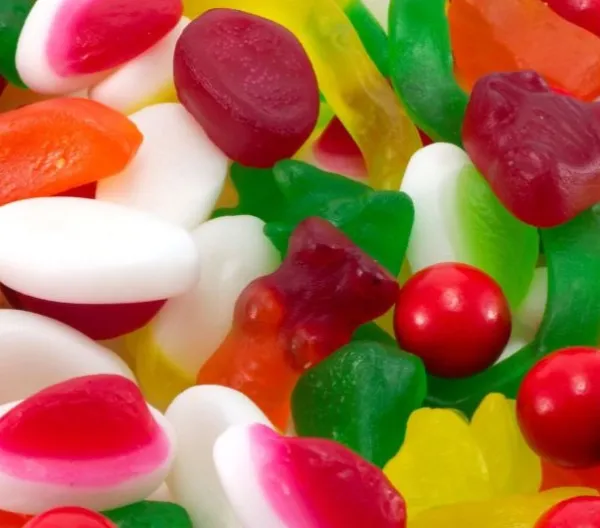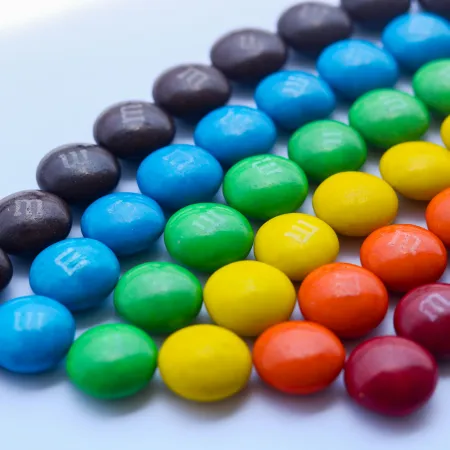Tagatose
Rating: Cut back
Purpose / Use
Tagatose is used as a sweetener, humectant (moisture retainer), texturizer and stabilizer in food.1 It is chemically related to (the mirror image of) the natural sugar fructose and is nearly as sweet as sucrose.2
Products
Tagatose is found naturally at low levels in some dairy products, whole wheat, white beans and various fruits.3,4 It is added to a variety of foods such as cereals, frozen desserts, and breads and is also used in sweetener packets.
Safety Assessment
Tagatose is poorly absorbed by the body.5 That's why it yields only about one-third as many calories as sucrose (table sugar)6 and why large amounts can cause diarrhea, nausea, and flatulence.1,4,7 Food safety authorities have noted that some people reported these gastrointestinal effects after consuming excess amounts of tagatose in a single serving (30 grams or 1 ounce).1 Health Canada estimates the average daily intake for adults in Canada as 24 grams per day.3 Food manufacturers have determined for themselves that tagatose is "generally recognized as safe" for use in food8-10 and the FDA did not object to those conclusions11-13—but remember a GRAS determination is not the same as getting formal FDA approval.
To learn more about the GRAS loophole and how it undercuts food safety and transparency, click here.
Other food authorities1,3,7 have not raised safety concerns over the use of tagatose in foods. The WHO gave an Acceptable Daily Intake (ADI) for tagatose as “not specified”14 meaning the typical total daily intake is likely to not cause health concerns.15 However, this does not apply to individuals with hereditary fructose intolerance, a rare condition. According to the WHO, while there is no direct evidence that people with hereditary fructose intolerance are also intolerant of tagatose, the similarities between fructose and tagatose suggest the same adverse effects could occur.1
Tagatose does not promote tooth decay, unlike other sugars such as sucrose.16
As with all non-nutritive and low-calorie sweeteners, CSPI recommends that children avoid tagatose and calls for additional research on the long-term health effects in children, in line with similar recommendations from the American Academy of Pediatrics (AAP) and Healthy Eating Research (HER). AAP’s and HER’s concerns are based on the lack of safety data on the consumption of non-nutritive sweeteners among children and the possibility that consumption of these types of sweeteners could lead to a preference for sweet foods and beverages among children.17-19 The best choice for all consumers is to choose unsweetened foods and beverages whenever possible.
References
- World Health Organization. WHO Technical Report Series. 928. Evaluation of Certain Food Additives. Sixty-third report of the Joint FAO/WHO Expert Committee on Food Additives. 2005. https://iris.who.int/bitstream/handle/10665/43141/WHO_TRS_928.pdf?sequence=1. Accessed February 4, 2025.
- Levin, GV et al. Sugar Substitutes: Their Energy Values, Bulk Characteristics, and Potential Health Benefits. Am J Clin Nutr. 1995; 62: 1 16 1 S- 1 168s. https://pubmed.ncbi.nlm.nih.gov/7484937/
- Health Canada. Novel Food Information: D-tagatose. May 17, 2022. https://www.canada.ca/en/health-canada/services/food-nutrition/genetically-modified-foods-other-novel-foods/approved-products/d-tagatose/document.html. Accessed February 4, 2025.
- Health Canada. The Gastrointestinal Effects of D-tagatose. May 27, 2022. https://www.canada.ca/en/health-canada/services/food-nutrition/genetically-modified-foods-other-novel-foods/approved-products/d-tagatose/gastrointestinal-effects.html. Accessed February 4, 2025.
- Bertelsen, H et al. D-tagatose - A Novel Low-Calorie Bulk Sweetener with Prebiotic Properties. World Rev. Nutr. Diet. 1999; 85:98-109. https://pubmed.ncbi.nlm.nih.gov/10647340/
- US Food and Drug Administration. FDA Issues Supplemental Response on the Labeling of D-tagatose on the Nutrition Facts Label. December 13, 2003. https://www.fda.gov/food/hfp-constituent-updates/fda-issues-supplemental-response-labeling-d-tagatose-nutrition-facts-label. Accessed July 24, 2025.
- Food Standards Australia New Zealand. Final Assessment Report: Application A472, D-Tagatose as A Novel Food. February 18, 2004. Available: https://www.foodstandards.gov.au/sites/default/files/food-standards-code/applications/Documents/A472_D_tagatose_FAR.pdf. Accessed February 4, 2025.
- GRAS Notice (GRN) No. 78. D-Tagatose. May 11, 2001. Available: https://wayback.archive-it.org/7993/20171031060156/https://www.fda.gov/downloads/Food/IngredientsPackagingLabeling/GRAS/NoticeInventory/UCM261321.pdf
- GRAS Notice (GRN) No. 352. D-Tagatose. August 20, 2010. Available: https://wayback.archive-it.org/7993/20171031045755/https://www.fda.gov/downloads/Food/IngredientsPackagingLabeling/GRAS/NoticeInventory/UCM269560.pdf
- GRAS Notice (GRN) No. 977. D-tagatose produced via novel enzymatic cascade. October 21, 2021. Available: https://www.fda.gov/media/155246/download
- US Food and Drug Administration. RE: GRAS Notice GRN No. 000078. October 25, 2001. Available: https://wayback.archive-it.org/7993/20171031032922/https://www.fda.gov/Food/IngredientsPackagingLabeling/GRAS/NoticeInventory/ucm154191.htm
- US Food and Drug Administration. RE: GRAS Notice GRN No. 000352. Feb 1, 2011. Available: https://wayback.archive-it.org/7993/20171031025622/https://www.fda.gov/Food/IngredientsPackagingLabeling/GRAS/NoticeInventory/ucm245241.htm
- US Food and Drug Administration. RE: GRAS Notice GRN No. 000977. Oct 2021. Available: https://www.fda.gov/media/155443/download
- Joint FAO/WHO Expert Committee on Food Additives. WHO Food Additives Series 54. World Health Organization. International Programme on Chemical Safety. 2006. https://www.inchem.org/documents/jecfa/jecmono/v54je01.pdf. Accessed February 4, 2025.
- World Health Organization. Food Additives. November 16, 2023. Available: https://www.who.int/news-room/fact-sheets/detail/food-additives. Accessed July 31, 2025.
- 68 Federal Reg. 39831. Food Labeling: Health Claims; D-tagatose and Dental Caries https://www.federalregister.gov/documents/2003/07/03/03-16949/food-labeling-health-claims-d-tagatose-and-dental-caries
- Baker-Smith CM, et al. The Use of Nonnutritive Sweeteners in Children. Pediatrics. 2019;144(5). https://pubmed.ncbi.nlm.nih.gov/31659005/
- Lott M, et al. Healthy Beverage Consumption in Early Childhood: Recommendations from Key National Health and Nutrition Organizations. Consensus Statement. Healthy Eating Research. September 2019. Available: https://healthyeatingresearch.org/wp-content/uploads/2019/09/HER-HealthyBeverage-ConsensusStatement.pdf. Accessed July 24, 2025.
- Lott M, et al. Healthy Beverage Consumption in School-Age Children and Adolescents: Recommendations from Key National Health and Nutrition Organizations. Consensus Statement. Healthy Eating Research. January 2025. Available: https://healthyeatingresearch.org/wp-content/uploads/2024/11/HER_ConsensusStatement_FINAL.pdf. Accessed July 24, 2025.
Support CSPI today
As a nonprofit organization that takes no donations from industry or government, CSPI relies on the support of donors to continue our work in securing a safe, nutritious, and transparent food system. Every donation—no matter how small—helps CSPI continue improving food access, removing harmful additives, strengthening food safety, conducting and reviewing research, and reforming food labeling.
Please support CSPI today, and consider contributing monthly. Thank you.
More about food additives
Why are there no EU-style food dye warning labels in the US?
Food Additives

How Big Food masquerades as concerned consumers
Food Additives

The 'Better FDA' Act will cement FDA’s failed chemical review system into law
Government Accountability

Meet the SHAM GRAS Act: A bill to weaken food chemical safety
Food Safety

CSPI urges federal and state regulators to accelerate progress on food dyes
Food Additives


